Evaluation of Oxidative Stress and Mitophagy during Adipogenic Differentiation of Adipose-Derived Stem Cells Isolated from Equine Metabolic Syndrome (EMS) Horses
- PMID: 29977307
- PMCID: PMC6011082
- DOI: 10.1155/2018/5340756
Evaluation of Oxidative Stress and Mitophagy during Adipogenic Differentiation of Adipose-Derived Stem Cells Isolated from Equine Metabolic Syndrome (EMS) Horses
Abstract
Mesenchymal stem cells (MSCs) are frequently used in both human and veterinary medicine because their unique properties, such as modulating the immune response and differentiating into multiple lineages, make them a valuable tool in cell-based therapies. However, many studies have indicated the age-, lifestyle-, and disease-related deterioration of MSC regenerative characteristics. However, it still needs to be elucidated how the patient's health status affects the effectiveness of MSC differentiation. In the present study, we isolated mesenchymal stem cells from adipose tissue (adipose-derived mesenchymal stem cells (ASCs)) from horses diagnosed with equine metabolic syndrome (EMS), a common metabolic disorder characterized by pathological obesity and insulin resistance. We investigated the metabolic status of isolated cells during adipogenic differentiation using multiple research methods, such as flow cytometry, PCR, immunofluorescence, or transmission and confocal microscopy. The results indicated the impaired differentiation potential of ASCEMS. Excessive ROS accumulation and ER stress are most likely the major factors limiting the multipotency of these cells. However, we observed autophagic flux during differentiation as a protective mechanism that allows cells to maintain homeostasis and remove dysfunctional mitochondria.
Figures
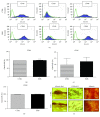
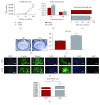
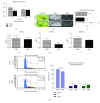

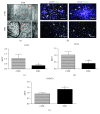
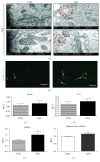

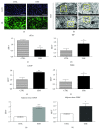

Similar articles
-
Equine metabolic syndrome impairs adipose stem cells osteogenic differentiation by predominance of autophagy over selective mitophagy.J Cell Mol Med. 2016 Dec;20(12):2384-2404. doi: 10.1111/jcmm.12932. Epub 2016 Sep 14. J Cell Mol Med. 2016. PMID: 27629697 Free PMC article.
-
Macroautophagy and Selective Mitophagy Ameliorate Chondrogenic Differentiation Potential in Adipose Stem Cells of Equine Metabolic Syndrome: New Findings in the Field of Progenitor Cells Differentiation.Oxid Med Cell Longev. 2016;2016:3718468. doi: 10.1155/2016/3718468. Epub 2016 Dec 8. Oxid Med Cell Longev. 2016. PMID: 28053691 Free PMC article.
-
Equine Metabolic Syndrome Affects Viability, Senescence, and Stress Factors of Equine Adipose-Derived Mesenchymal Stromal Stem Cells: New Insight into EqASCs Isolated from EMS Horses in the Context of Their Aging.Oxid Med Cell Longev. 2016;2016:4710326. doi: 10.1155/2016/4710326. Epub 2015 Nov 22. Oxid Med Cell Longev. 2016. PMID: 26682006 Free PMC article.
-
Advanced nutritional and stem cells approaches to prevent equine metabolic syndrome.Res Vet Sci. 2018 Jun;118:115-125. doi: 10.1016/j.rvsc.2018.01.015. Epub 2018 Jan 31. Res Vet Sci. 2018. PMID: 29421480 Review.
-
Proteomic techniques for characterisation of mesenchymal stem cell secretome.Biochimie. 2013 Dec;95(12):2196-211. doi: 10.1016/j.biochi.2013.07.015. Epub 2013 Jul 20. Biochimie. 2013. PMID: 23880644 Review.
Cited by
-
Adipose-Derived Stromal/Stem Cells from Large Animal Models: from Basic to Applied Science.Stem Cell Rev Rep. 2021 Jun;17(3):719-738. doi: 10.1007/s12015-020-10049-y. Epub 2020 Oct 6. Stem Cell Rev Rep. 2021. PMID: 33025392 Free PMC article. Review.
-
Therapeutic mesenchymal stromal stem cells: Isolation, characterization and role in equine regenerative medicine and metabolic disorders.Stem Cell Rev Rep. 2020 Apr;16(2):301-322. doi: 10.1007/s12015-019-09932-0. Stem Cell Rev Rep. 2020. PMID: 31797146 Review.
-
5-Azacytidine and Resveratrol Enhance Chondrogenic Differentiation of Metabolic Syndrome-Derived Mesenchymal Stem Cells by Modulating Autophagy.Oxid Med Cell Longev. 2019 May 12;2019:1523140. doi: 10.1155/2019/1523140. eCollection 2019. Oxid Med Cell Longev. 2019. PMID: 31214275 Free PMC article.
-
Moderate SMFs attenuate bone loss in mice by promoting directional osteogenic differentiation of BMSCs.Stem Cell Res Ther. 2020 Nov 16;11(1):487. doi: 10.1186/s13287-020-02004-y. Stem Cell Res Ther. 2020. PMID: 33198804 Free PMC article.
-
Characterization of the Proteins Secreted by Equine Muscle-Derived Mesenchymal Stem Cells Exposed to Cartilage Explants in Osteoarthritis Model.Stem Cell Rev Rep. 2023 Feb;19(2):550-567. doi: 10.1007/s12015-022-10463-4. Epub 2022 Oct 22. Stem Cell Rev Rep. 2023. PMID: 36271312 Free PMC article.
References
-
- Marędziak M., Marycz K., Lewandowski D., Siudzińska A., Śmieszek A. Static magnetic field enhances synthesis and secretion of membrane-derived microvesicles (MVs) rich in VEGF and BMP-2 in equine adipose-derived stromal cells (EqASCs)—a new approach in veterinary regenerative medicine. In Vitro Cellular & Developmental Biology - Animal. 2015;51(3):230–240. doi: 10.1007/s11626-014-9828-0. - DOI - PMC - PubMed
LinkOut - more resources
Full Text Sources
Other Literature Sources
Miscellaneous

